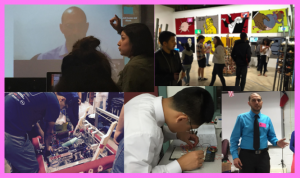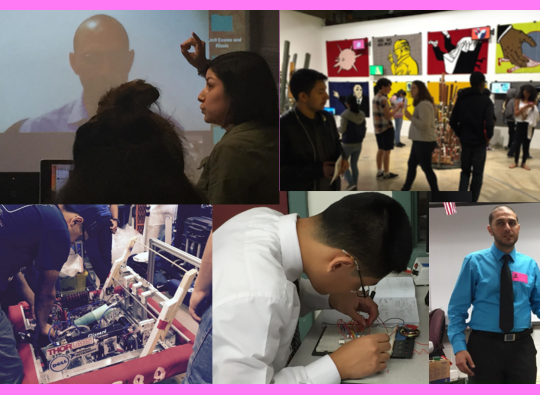


Original Source of 6A’s: Real Learning, Real Work by Adria Steinberg
Authenticity:
- How will professionals solve this problem?
- How is the project relevant to students’s lives?
- What are authentic audiences for the project?
Academic Rigor:
- What learning standards are addressed in the project?
- What central concepts are scaffolded and assessed?
- What habits of habit are scaffolded and assessed?
- What is the central problem addressed by the project?
Applied Learning:
- How will project products get students to apply new knowledge and skills to complex problems?
- What workplace competencies will students practice in the project?
- What self- and project management skills will students use to succeed in the project?
Active Exploration:
- What field-based opportunities are integrated into the project?
- What sources of information will students leverage in the project?
Adult Connections:
- Will students get support from experts residing outside the classroom?
- Will students get to work alongside experts at a field site during project?
- Will outside experts convey real world standards for students’ project work?
Assessment Practices:
- What are the criteria for measuring desired learning outcomes?
- Are students involved in creating or reviewing project assessment criteria?
- What self-assessment approaches will be used?
- examples: journals, peer conferences, teacher-mentor conferences, rubrics, periodic progress checks
- What types of work will students generate to demonstrate mastery of learning outcomes?
- Does culminating presentation allow students to apply learned skills?

The 6A’s criteria can be used to evaluate and improve PBL project design. Projects that meet the 6A’s criteria are engaging, rigorous, relevant, inquiry-based, inspiring and academically sound. For more project design criteria, see this article: Backwards design template & standards.

Preparation Steps
- Use 6A’s reflection questions to create and refine design of projects
- Research strategies and opportunities to enhance 6A’s strengths of projects and overcome or eliminate gaps of projects
Early Implementation Steps
- Implement projects that satisfy 6A’s criteria
- Use formative feedback to fine tune projects in progress and to coach students to improve their understandings and products
Advanced Implementation Steps
- Use student feedback to improve manifestation of 6A’s criteria in projects
- Develop design process routines and templates that make it easier to create projects and evaluate them using the 6A’s rubric
- Develop community partnerships that will enhance Adult Connections in projects
- Learn how to use and scaffold technology tools that will improve Active Exploration and Authenticity of projects

